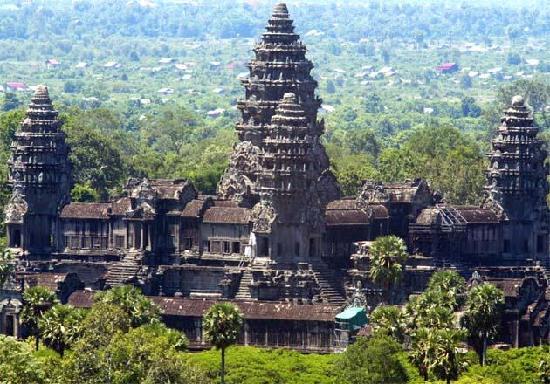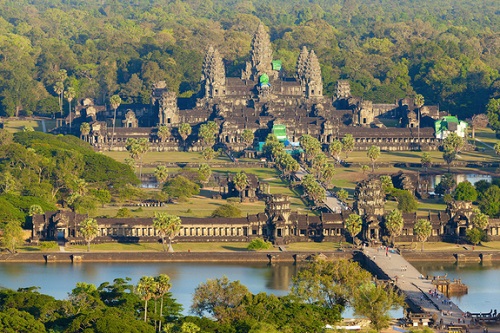Cambodia’s Angkor Wat
Angkor Wat could potentially lose its status as the world’s largest religious monument to a $78 million upstart being conceived in the backlands of Bihar, one of India’s most impoverished provinces.
Cambodia’s Angkor Wat
The proposed temple, named Viraat Ramayan Mandir (Majestic Ramayan Temple), will be 379 feet tall with 18 spires spread across 200 acres of land. In comparison, Cambodia’s Angkor Wat—sprawling over 500 acres, equivalent to more than 300 football fields—is 215 feet tall with nine spires, but will remain the largest temple in terms of land size.
The 800-year-old Angkor Wat, which means Capital Temple, was built by King Suryavarman II of the Khmer empire.
Expected to be complete by 2023, Angkor’s new-age rival will be owned by a private trust—the Mahavir Mandir Trust—that plans to spend Rs500 crore ($78 million) to build the temple in the East Champaran district of Bihar. The eastern state is one of the poorest in India: In 2014, per capita income in Bihar stood at Rs31,229($490), compared to the national average of Rs74,380($1,167).
“Its not just a temple. It is a masterpiece,” Kishore Kunal, secretary of Mahavir Mandir Nyas Samiti, the trust’s arm overseeing the project, told Quartz. “This temple will bring in tourists and provide a large number of jobs for the locals. That’s the main idea behind building the temple.”
To be built of red sandstone—the same material used in New Delhi’s iconic Red Fort and Rashtrapati Bhawan—the Viraat Ramayan Mandir, as the name same suggests, will be dedicated to Lord Ram, an avatar of the Hindu god Vishnu. Angkor Wat, too, is dedicated to Vishnu.
The project was first proposed in 2012 by the Mahavir Mandir Trust—which also runs four hospitals in Bihar—as the Virat Angkor Wat Ram Mandir but later changed names after objection from Cambodia.
Since then, the trust had been trying to complete the land acquisition for the project, including reportedly convincing local Muslims to part with their land to build the temple. “We do not want to play cheap communal politics,” Kunal explained. “That is why Muslims have also come forward to donate the land for the project.”
So far, the trust has spent Rs5 crore ($785,000) on land acquisition, while some locals even donated their land for the project. And most of the funds required to build the temple will come from devotees, with each square foot expected to cost about Rs7,707.




